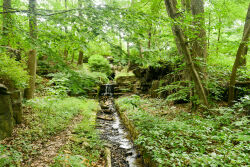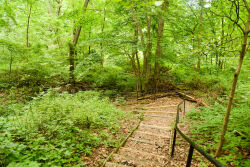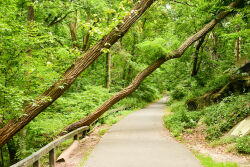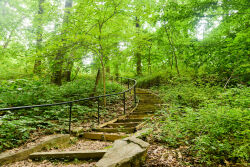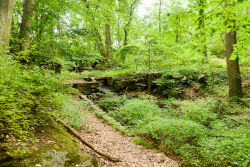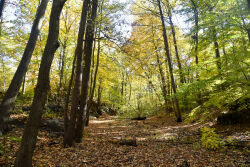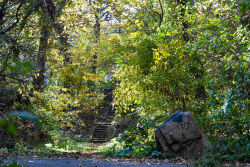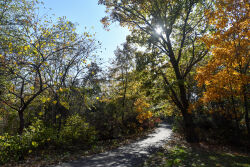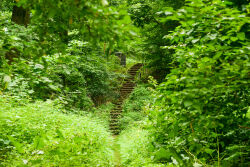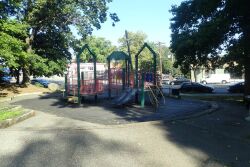Seton Falls Park
Seton Falls Park
What was here before?
The surrounding area was formerly inhabited by Siwanoy band of the Wappinger people. In 1654 English colonist Thomas Pell purchased a large parcel of land from the Siwanoys. Pell invited farmers from Fairfield County, Connecticut to settle here, and they incorporated the area into the town of Eastchester in 1666. The Bronx and lower Westchester were the scene of much military action during the Revolutionary War. One battle occurred in what is now Seton Falls Park in 1781, as the British retreated under fire by the patriots. Ownership of the area changed after the war because many British loyalists lost their property following the war.
James Roosevelt, an ancestor of two U.S. Presidents, was the first owner after the Revolutionary War. Nathaniel Prime, a wealthy New York banker, later acquired the area and called his estate “The Cedars” for the many red cedars on his land. Upon his death in 1840, the property was transferred to Prime’s daughter Emily, who married William Seton, the eldest son of Saint Elizabeth Seton. He renamed the fifty-one-acre estate “Cragdon” and transformed it into a working farm with two ponds.
How did this site become a Park?
On June 10, 1914 the city acquired thirty-two acres of the former Seton estate, which was widely used for recreation in the early 1900s despite not being an official park, for the Department of Health to build a hospital for contagious diseases. Twenty-nine acres of this parcel were assigned to NYC Parks on June 11, 1930, following fifteen years of community resistance to the hospital plan. The remaining three acres were annexed in 1932. Additional lands were assigned to Parks in 1983 and 1985.
The eastern portion of the park was improved by 1936 with a baseball field, two outhouses, water fountain, and maintenance enclosure. The western portion of the park was preserved as mature forest, mostly undisturbed since the time of the American Revolution. In 1981, city funds paid for a pumping station to drain Rattlesnake Creek and solve flooding problems.
In 1997 the Seton Falls Park Preservation Coalition received a grant from the New York City Environmental Fund to implement a school-based educational program about the restoration of the park’s wetlands and woodlands. In 2007, Parks completed a reconstruction of existing path and trail systems, new signage for trails, and improved vehicle access for better maintenance and security. In addition, erosion control measures were implemented to reduce water ponding, and boardwalks were installed along the wetlands with new plantings.
While the park remains largely woodland, wetland, and a bird sanctuary, it includes recreational facilities and courts on its southwest corner.
Who is this park named for?
Seton Falls Park derives its name from the once prominent waterfalls built in the park by the Seton family. In the 19th century, these landowners were instrumental in the political and social affairs of what was then the town of Eastchester. The best-known member of the family was Elizabeth Seton (1774-1821), the first American to be canonized as a saint by the Roman Catholic Church. After the death of her husband in 1803, she converted to Catholicism and moved with her five children to Baltimore. After taking her vows, she established the American Sisters of Charity, the first Roman Catholic religious order in the United States, in Emmitsburg in 1809. Another family member, Robert Seton, was the first American Catholic priest to become a Monsignor.
Check out your park's Vital Signs
Clean & Safe
Green & Resilient
Empowered & Engaged Users
Share your feedback or learn more about how this park is part of a
Vital Park System

